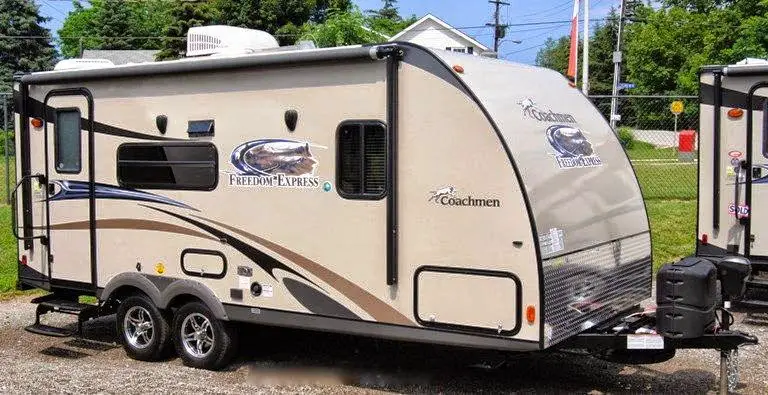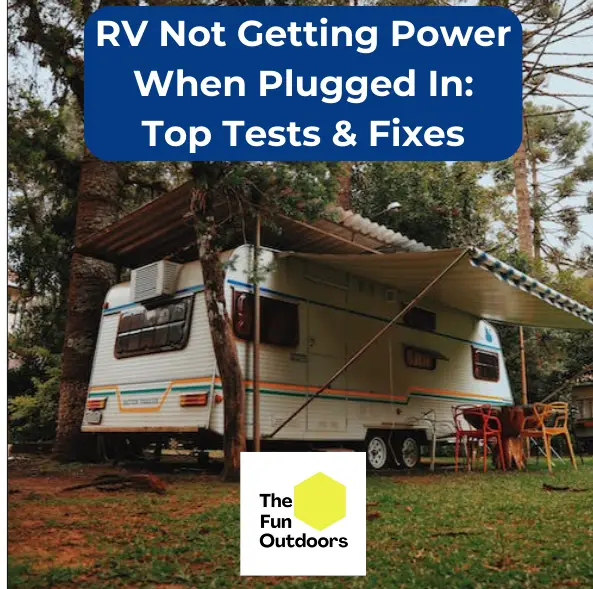Nothing’s worse than getting ready to camp and find that your RV not getting power when plugged in. Fortunately, there are steps you can take to troubleshoot the issue and get your RV back up and running, which is what we’ll cover in this guide.
If you’re experiencing a lack of power when your RV is plugged in, there are several things you can try before seeking professional help. These include checking and resetting the GFCI, disconnecting the RV’s power pedestal and resetting the main breaker panel, and checking the diagnostic lights to see if there is power going to the surge protector. By trying these steps, you may be able to resolve the issue and get your RV back to full power.
Quick Facts:
- Recognize the symptoms of power issues in your RV to narrow down potential causes.
- Try troubleshooting steps such as resetting the GFCI and checking diagnostic lights before seeking professional help.
- Regular maintenance and inspections can help prevent power issues from occurring in the first place.
Recognizing Symptoms of Power Issues
As an avid RV enthusiast, I have experienced my fair share of power issues when on the road. It can be frustrating when you plug in your RV, but nothing seems to work.
In this section, I will share some tips on how to recognize symptoms of power issues in your RV.
Lights
One of the easiest ways to recognize a power issue is by checking your lights. If your RV is not getting power when plugged in, your lights may not turn on or may be dim.
If you notice this, it is important to check your power source and connections.
Outlets
Another way to recognize a power issue is by checking your outlets. If your RV is not getting power when plugged in, your outlets may not work.
This means you won’t be able to charge your phone or use any other electrical appliances that require an outlet.
Microwave, Heat, Fridge, TV, and Air Conditioner
If your RV is not getting power when plugged in, you may also notice that your microwave, heater, fridge, TV, and air conditioner are not working.
These appliances require a lot of power, so if they are not working, it is likely that your RV is not getting enough power.
Refrigerator
Your RV’s refrigerator is another appliance that requires a lot of power.
If your RV is not getting power when plugged in, your refrigerator may not work.
This can be a big problem, especially if you have food that needs to be kept cold.
Diagnostic Lights
Many RVs come with diagnostic lights that can help you identify power issues.
If your RV is not getting power when plugged in, check the diagnostic lights to see if there is power going to the surge protector.
This can help you identify where the power issue is coming from.
RV Plugged In But No Power: 11 Things To Try

As an experienced RV owner, I know how frustrating it can be to plug in your RV and find that it’s not getting any power.
Don’t worry- there are several things you can do to troubleshoot the issue and get your RV up and running again. Here are some tips that have worked for me in the past:
Check If The Main GFCI Is Tripped
The first thing you should do when your RV is not getting power is to check the Ground Fault Circuit Interrupter (GFCI).
This is a safety feature that shuts off electric power if there’s a ground fault. You can find the GFCI in your RV’s bathroom or kitchen.
If it’s tripped, simply press the reset button to restore power.
Reset The Power Pedestal’s Main Circuit Breakers
If the GFCI is not the issue, then the next step is to check the power pedestal’s main circuit breakers. Turn off all the breakers and then turn them back on one by one. This should reset the power and get your RV up and running again.
Check and Reset The Main 110V Circuit Breaker
If the power pedestal’s main circuit breakers are not the issue, then you should check the main 110V circuit breaker in your RV.
This breaker controls the power coming into your RV from the power pedestal. If it’s tripped, simply reset it to restore power.
Inspecting the Electrical Wiring
Check the electrical wiring in your RV for any signs of damage or wear and tear.
Look for frayed wires, loose connections, or signs of corrosion.
If you find any issues, it’s best to call a technician to fix them.
Examining the Breakers and Fuses
Check the breakers and fuses in your RV for any signs of damage or wear and tear.
Look for blown fuses or tripped breakers. If you find any issues, replace them with new ones.
Unhook From Shore Power and Reset The RV Breaker
If none of the above steps work, then try unhooking your RV from shore power and resetting the RV breaker. This should reset the power and get your RV up and running again.
Testing the Converter and Inverter
Check the converter and inverter in your RV for any signs of damage or wear and tear.
These are responsible for converting AC power to DC power and vice versa.
If they’re not working properly, your RV may not be getting power.
Assessing the Battery
Check the RV battery for any signs of damage or wear and tear.
Make sure it’s securely connected and not damaged. Inspect the terminal posts for corrosion and clean if necessary.
If the battery is dead or damaged, your RV electrical system won’t perform well at all.
Make Sure Your RV’s Surge Protector Is Working
Check your RV’s surge protector to make sure it’s working properly.
This device protects your RV from power surges and other electrical issues.
If it’s not working properly, your RV may not be getting power.
Confirm The RV Power Transfer Switch Is Working
Check the RV power transfer switch to make sure it’s working properly.
This switch controls the transfer of power between your RV’s generator and shore power.
If it’s not working properly, your RV may not be getting power.
Inspect Your Power Cord For Damage
Check your power cord for any signs of damage or wear and tear. Look for frayed wires, loose connections, or signs of corrosion. If you find any issues, replace the power cord with a new one.
By following these tips, you should be able to troubleshoot and fix any RV power issues you may be experiencing.
Remember to always prioritize safety and call a technician if you’re unsure about any of the steps. Happy RVing!
When to Seek Professional Help
If you’ve tried all the troubleshooting steps and your RV still isn’t getting power when plugged in, it might be time to seek professional help. Here are some situations where it’s best to call in an expert:
- If you’re not comfortable working with electricity, it’s best to leave it to the professionals. Working with electrical systems can be dangerous, and it’s important to know what you’re doing.
- If you’ve tried resetting the GFCI and checking the circuit breakers, but you’re still not getting power, it’s time to call an electrician. They can check the wiring and make sure everything is properly connected.
- If you’re on the road and don’t have access to a repair shop, you can try calling a mobile RV repair service. They can come to you and diagnose the problem on site.
- If you’re planning a long RV trip and want to make sure your electrical system is in good shape, you can take your RV to a repair shop for a full inspection. They can check the wiring, test the batteries, and make sure everything is working properly.
Remember, safety should always be your top priority when working with electrical systems. If you’re not sure what you’re doing, it’s best to call in a professional.
Don’t take any chances with your RV’s electrical system – it’s better to be safe than sorry!

